Milk: Everything You Need to Know
Today, it’s all about milk and everything you need to know. Milk is a dairy product that most people have consumed most of their lives. Traditional milk comes from a cow and goes through a filtering process before it’s bottled and shipped out to grocery stores, where it’s then sold.
In some places, it’s easier to find many consistent sources of milk, making it cheaper. It really depends on where you live and where you shop. While milk is a staple and a lot of people use it, there are some things you might not know about it. It’s also important to learn about the other milk varieties available. Keep in mind that liquid milk can go bad fairly quickly. Some of the varieties of milk discussed today have longer “best used by” dates than others. Be sure to check the dates on any products you buy.
These are shelf-stable but not designed for long-term storage:
Shelf-Stable Organic Whole Milk
Shelf-Stable 2% Gossner’s Milk
Milk: Everything You Need to Know
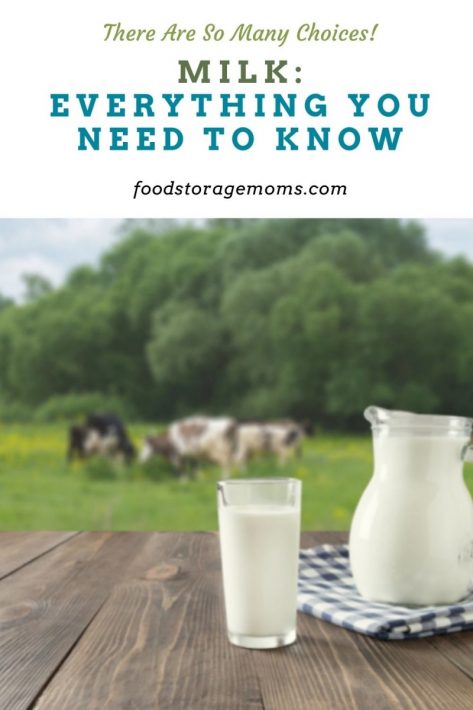
Is Milk Good for You?
When looking at the food pyramid, you can see a section for dairy products that includes milk. It’s good to consume because it’s an excellent source of calcium. In addition, it contains essential nutrients and vitamins, including vitamins A, B6, and B12. It is also a great source of calcium since it provides about 28% of your daily requirement.
Doctors often encourage patients to drink milk or use it when preparing meals to reap its benefits. When you drink milk, it can strengthen your bones and improve your overall health.
Some people are lactose intolerant. When you’re lactose intolerant, milk and anything else containing dairy-related products, such as cheese, yogurt, and even ice cream, can leave you with an upset stomach.
The intolerance can cause constipation, bloating, diarrhea, cramping, and more. Those who struggle with lactose intolerance would need to buy lactose-free milk and dairy products to avoid those stomach issues. In case you missed this post, 10 Uses for Powdered Milk or Instant Milk
What Is the Difference Between 1%, 2%, and Whole Milk?
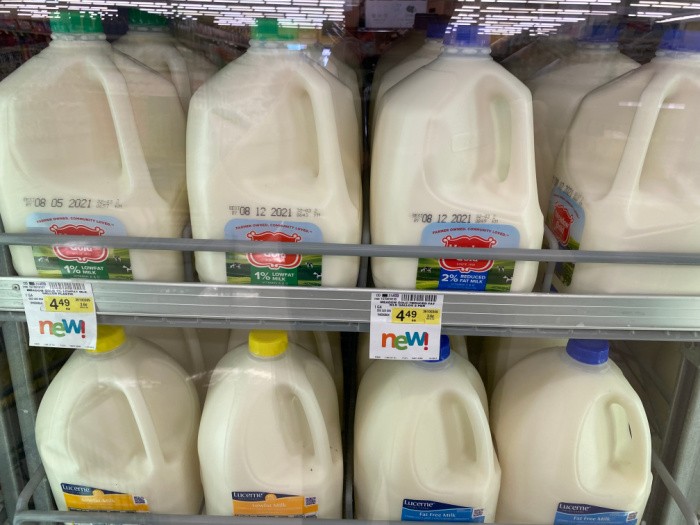
When shopping at the grocery store, you may notice a few variations of milk available. Each container of milk typically has a different color label to make it easier to identify them. The three primary options available at the grocery store include 1% milk, 2% milk, and whole milk.
Whole milk is full-fat milk. While it goes through the filtering process, it still contains fat and is ideal for use in recipes. It has a thicker and creamier texture.
Some people will only drink whole milk because they feel it has the best taste compared to the other options. However, whole milk contains more calories.
On the other hand, both 1% milk and 2% milk have the excess fat removed from traditional whole milk. Therefore, it’s ideal for those trying to watch their fat intake.
The extra fat in whole milk can upset the stomachs of some people, while the skim options tend to have less of a negative impact on the stomach.
Skim milk versions also contain fewer calories, making them an excellent choice for those trying to maintain lower calorie intake. If you don’t mind the taste of 1% or 2% milk, which are a bit lighter in color than traditional whole milk, it’s a good idea to go for the skim options.
It’s all about preference. Some people will only use whole milk, but others are willing to try different options or grab whatever is on sale, or which they feel may be more healthy for them.
What Other Milk Variations Are Available?
Besides cow’s milk, many other milk variations are available to the public. As a result, now it’s easier to find alternatives to traditional cow’s milk than ever before, which is an excellent thing for those with lactose intolerance and those living a vegan lifestyle.
Almond Milk
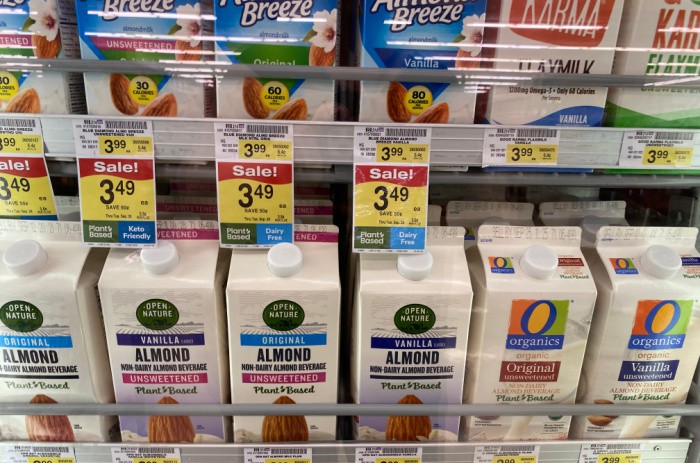
Almond milk is one of several popular alternatives to cow’s milk. It’s made from almonds, but it doesn’t have a nutty taste. Instead, it tastes a lot like conventional milk. The great thing about almond milk is that there are many varieties.
You can find unsweetened options that taste a bit plain and sweetened options containing some sugar for added sweetness. It’s available in different flavors, including vanilla, vanilla with honey, and chocolate. It’s light, healthy, and delicious.
Soy Milk
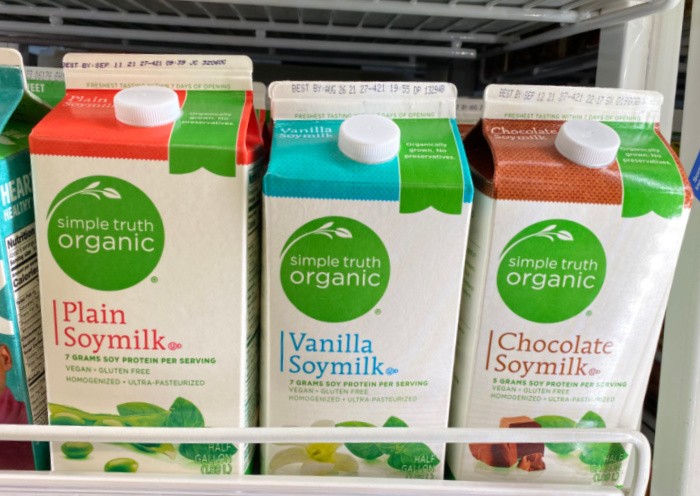
Soy milk is another alternative available in grocery stores across the country. It’s a plant-based beverage that tastes similar to traditional milk, but it doesn’t contain any dairy. Instead, soy milk comes from soaked soybeans that get boiled and filtered before creating the liquid.
Soy milk is a great alternative to cow’s milk-based on the nutrients it provides. Eight ounces of soy milk can provide 130% of your daily needs of vitamin B12, 35% of calcium, 15% of vitamin D, and 35% of your need for riboflavin.
It’s also available in different flavors, including vanilla and chocolate. Those with an intolerance to lactose may choose to use soy milk for drinking or preparing various meals.
Oat Milk
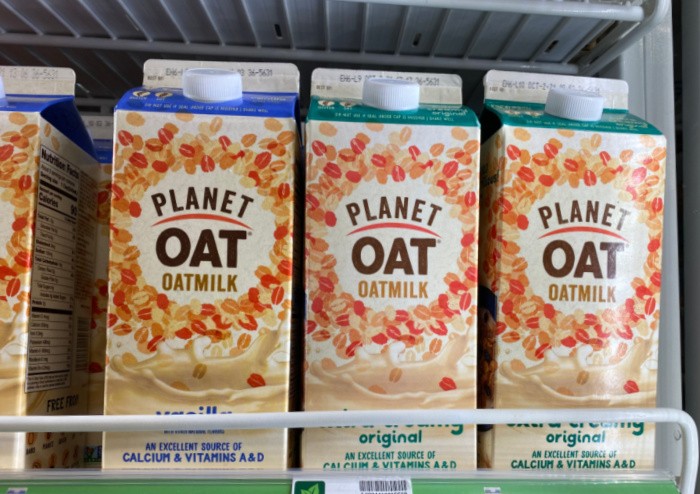
Oat milk is a popular variation of milk known for its thicker consistency. One thing about both almond milk and soy milk is that some people feel they’re thicker in texture than traditional whole milk. Oat milk is good for you since it provides large amounts of a number of nutrients. You’ll benefit from fiber, vitamin A, and calcium. It also has twice the amount of iron (10% of daily requirement) than cow’s milk. It’s also lower in fat and has no traces of cholesterol.
Some other benefits of oat milk are: it protects your cardiovascular health, boosts your immune system, lowers overall body inflammation, and increases bone strength.
The purpose behind oat milk was to provide something with a similar texture that is still dairy-free. You can find unsweetened variations of the beverage, along with different flavors, such as chocolate and vanilla.
You can use it for drinking or add it to other things, such as smoothies and oatmeal cereal. In case you missed this post, How To Make Oat Milk (It’s So Easy)
With several variations on the market, people have the option of choosing which milk they’d like to consume. So whether you’d like to stick with the original cow’s milk or go for one of these alternative options, the choice is yours, and it’s all about choosing what works best for your flavor preferences, texture, and dietary needs.
Ways to Use Traditional Cow’s Milk
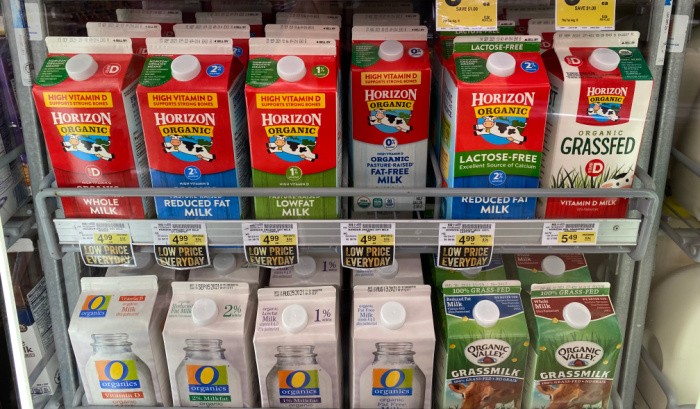
You can use traditional cow’s milk in many ways. You can add milk to a blender with ice cream to prepare a homemade milkshake. You can use it to make ice cream at home.
You may also need milk to complete different recipes that you’re preparing, such as baked macaroni and cheese, casseroles, and more.
Some people like to add syrups and/or powders to their milk. For example, you can find chocolate syrup, caramel syrup, and strawberry syrup to add to your milk to give it even more flavor.
If you don’t want to use syrup, you can find different powder products in various flavors, such as vanilla, chocolate, and strawberry.
Cashew Milk
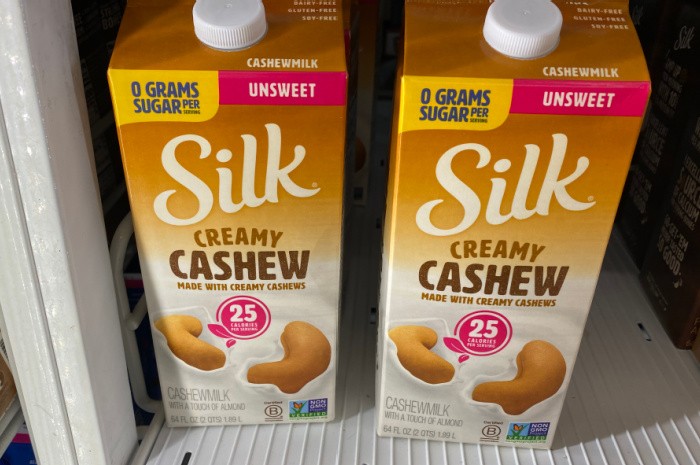
Not too many people know about or have used cashew milk. It is made from whole cashews mixed with water. People comment that it has a creamy, rich consistency and provides a bunch of minerals, vitamins, healthy fats, and plant compounds that are very beneficial. It comes in both unsweetened and sweetened varieties that will go well in place of cow’s milk in your recipe ingredients.
Cashew milk has been shown to boost immunity and work to improve the health of your eyes, heart, and skin. Other health benefits include nutrient content, aids in the clotting of blood, helps control your blood sugar levels and MAY have some anticancer effects.
The next time you have the urge to try something new in your meal planning, try some cashew milk for a delicious and nutritious alternative to cow’s milk.
Coconut Milk
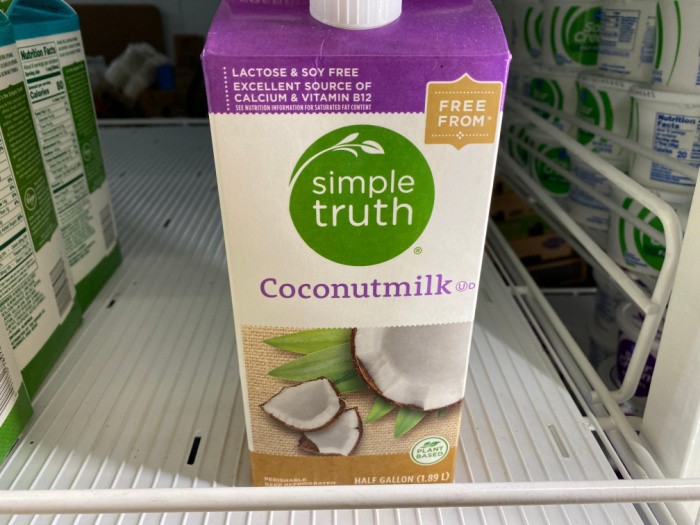
Coconut milk isn’t the liquid you find with you first break open the coconut. It is made by taking the white “meat” of the coconut, grating it, and then pressing it to create a fatty cream. If you then add some water you have the “milk” we buy at the store.
Coconut milk may be a good alternative to cow’s milk for some people, but due to the fat content, it may prove problematic to those who are watching their weight. One cup of unsweetened coconut milk (coconut cream) actually has 445 calories, 48 grams of fat, and 43 grams of saturated fat. It may prove to be best used in smaller amounts like a tablespoon full in your morning coffee where you only consume 30 calories and 3.2 grams of fat.
If you use your coconut milk in these small quantities you won’t see many health benefits due to the small amounts of manganese, iron, copper, zinc, and phosphorus.
Milk: Everything You Need to Know
Final Word
Milk is a nutritional beverage commonly sold in grocery stores across the country and worldwide. It provides vitamins, nutrients, and calcium to those who consume it.
While it has its advantages, some people can’t drink traditional cow’s milk because of lactose intolerance or because they’re living a vegan lifestyle. Luckily, several dairy-free milk options are readily available. May God Bless this world, Linda
Copyright Images: Fresh Milk AdobeStock_281001895 by svetlana_cherruty

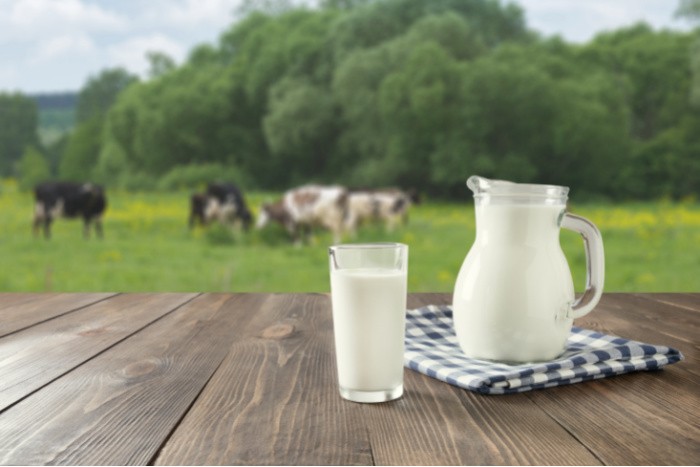


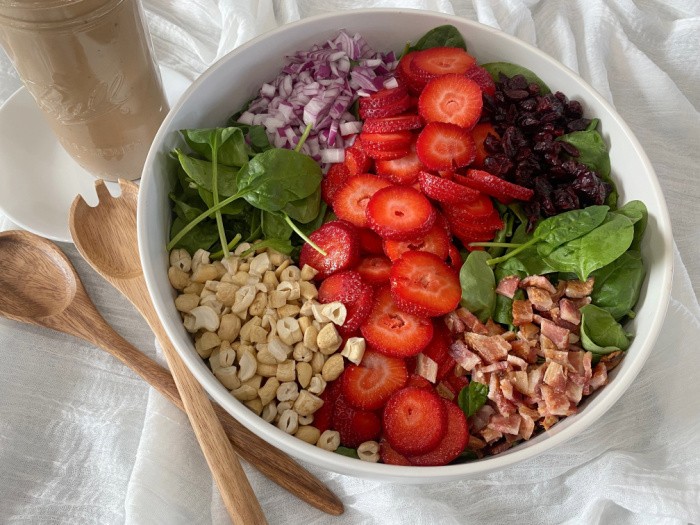



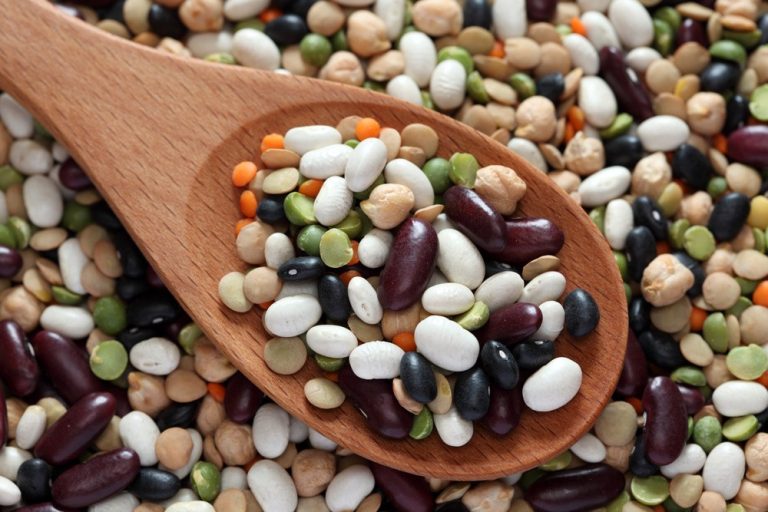













I use powder milk and only mix up a qt. at a time. I have found that it’s very tasty if you add a little bit of sugar and vanilla (to taste) while mixing it up. In the recent past, I’ve also used the shelf stable milk (regular, not almond, etc.) and it’s not bad either and it does last quite some time (even well past “use by” date when kept in the frig. While I don’t drink a lot of milk, use it mostly for baking and cooking, going the powder route saves me a lot of money since when I buy milk it tends to rot in my frig because I don’t use it that often, lol.
Hi Pam, I hear you about the milk going bad. I do not drink milk, but my husband uses it on his cereal every morning. I like the feeling of having instant milk in my food storage. I need to try the vanilla and sugar trick! I love it! Linda
Great post, Linda! I’ve used Coconut milk, too. Don’t do Soy milk though. My niece, who’s in her mid 50s, couldn’t drink any milk of any kind. She was allergic to the butter fat or something. It’s been a long time ago. She was raised on tea and baby food. I’ve never really cared for milk. I was still drinking formula when I was drinking from a cup. Never acquired a taste for it. I do like buttermilk and have it in powdered form. As well as powdered regular milk, and canned milk.
Hi Deborah, interesting on the butterfat, it makes sense. It really is great that we can buy instant buttermilk and instant regular milk. I don;t drink milk either. Hot chocolate is about as close as I get! LOL! Linda
LOL Linda. Same for me. I will drink the milk from eating cereal. Waste not, want not.
Hi Deborah, oh, yeah as a little girl we had to do that. I eat cereal with bananas and no milk, now. LOL! Linda
There is a new milk product out that can be use by those that have a problem with regular milk. It is called A2 and it is from cows that have only that gene in their system. After we lost our Jersey , that we had milked for years, some our our family had trouble with regular milk. Now that this new one had come out on the market, they can now drink regular milk again.
Hi Cheryl, oh I saw that on TV, commercials, I love the TV. Interesting how milk is better for some people without certain genes. Good to hear you family can have milk again, Linda
Re. the A2 milk–my dad kept Jerseys as family cows until I was in my 20s (I was the substitute hand milker if he was away, or sick, or whatever). Finally, about 15 years ago, we discovered a family dairy 4 miles away that sells whole raw milk from pastured Jerseys! So good to have again. It tastes better, cooks better, even keeps better in the refrigerator. (And if raw milk sours, you can still cook things with it–or make cheese–but if pasteurized/processed milk goes bad, it’s just putrid, rotten milk!) I love getting some of the spring/early summer cream for making butter.
For those who have trouble with industrial processed milk, it’s worth checking to see if there is a source of raw milk anywhere near (and it *must* be produced specifically for raw milk–industrial milk production is not as careful, knowing it will be pasteurized! Just like the 19th century “distillery milk” that resulted in the push to pasteurize everything!) Just go easy with it at first–as with anything your body isn’t used to, it may upset your stomach if you overindulge. Another possibility is goats’ milk–and there are even sources for such things as camel milk, which works for some condition whose name I don’t recall. (I’ve even tried my mare’s milk–rather like sweetened skim milk.)
Hi Rhonda, I have heard of people here in Southern Utah drinking goat’s milk. It’s my understanding in Utah (I don’t know for sure) that you can’t sell raw milk. I know someone who has a frig on their front porch full of raw milk. It’s not for sale but people love his milk and they have a jar to pay if you want to help with feed and whatnot. He helps a lot of families. Life is so good with fresh everything, including milk. Linda
Camel milk is also a good alternative. It is safe for people with lactose intolerance and dairy protein allergies.
And more nutritious (bioavailable nutrients) than many plant-based milk.
Careful with oat milk as it triggers GI spikes: eatthis.com/secret-side-effect-drinking-oat-milk/
Hi Fred, oh my gosh, I did not know you can buy camel milk. I learned something new today! Thank you for the heads up! Thanks for the link on the oat milk. Linda